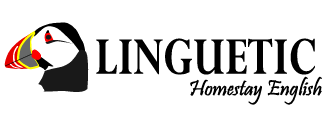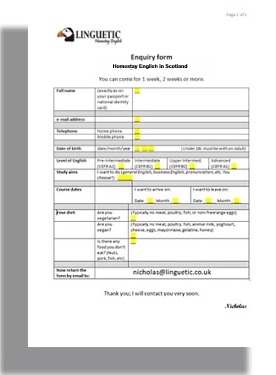Homestay English
Live with an English teacher and study English one-to-one
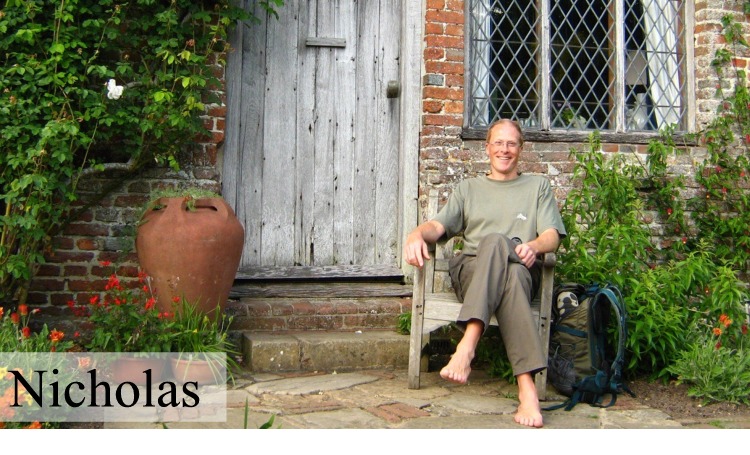
Learn English at my home
"Homestay English" is a very good way for adults to study English. With me, the cost is £700 per week. This is for 15 hours of 1:1 lessons per week, plus lots of conversation; nice accommodation at my home; good food and wine; and excursions on the wild and wonderful islands of Ulva and Mull, Scotland. (I also teach online by Google Meet, Zoom or Skype, and I travel to teach in your community.)
Homestay dates:
All of 2024
| • About me | • The island of Ulva |
| • My teaching | • My home |
| • Visas, Covid-19 and travel | • Enquiry form |
About me:
I’m a native English speaker. I was born in England, and I was a lawyer in England for 20 years. Apart from teaching, I also do French-English translation and I'm studying environmental science.
I’m an experienced teacher of general English, business English, academic English and English for Specific Purposes..
I teach people from CEFR B1 (Intermediate) to CEFR C1 (Advanced).
A noter : Je parle également français, donc j'accepte les apprentis francophones dès le niveau CEFR A2 ; c'est-à-dire le niveau Pre-Intermediate.
If you are a woman travelling alone, you can contact a young lady who studied English for three weeks at my home in 2021. She will be happy to confirm that I am civilised!
I’m a lively person who enjoys meeting new people. I have a very wide range of interests, from archaeology to zoology. This makes it easy to have good conversations with people learning English. I’m especially interested in English literature, environment and ecology, sea sports (sailing and sea kayaking) and mountain sports (hiking and skiing).
The island of Ulva
I live on the wild, beautiful little island of Ulva, in the Atlantic Ocean off the west coast of Scotland. Ulva is 8km long and 4km wide. The human population of Ulva is just 12 people, and there are no cars on the island, just a few farm vehicles and some small electric vehicles for community use.
Ulva has no shops, and no pub, but there is a very good cafe/restaurant, and good internet. The east end of Ulva is partly farmland (the famous Highland cows with their long hair and long horns) and partly woodland, with fine mature trees of all kinds.
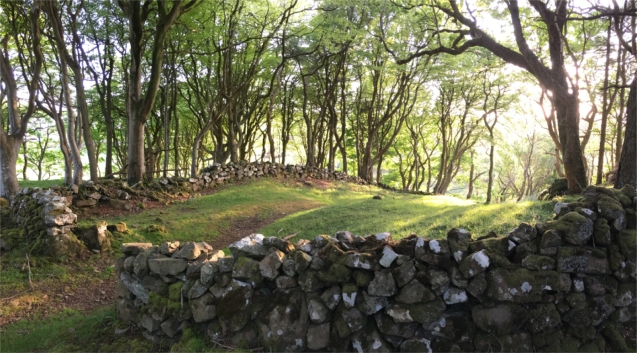
The west end of Ulva is the typical landscape of the Scottish Highlands & Islands, with very few trees, and several old villages that were abandoned in the 19th century. They are in beautiful locations.

On land, Ulva has wonderful walks and views - see the photo gallery links below. It is in the Loch na Keal National Scenic Area. If you go walking, you are almost sure to see wild red deer, golden eagles, sea eagles, buzzards, hen harriers and many smaller birds and animals. In and on the sea there are seals, otters, dolphins, porpoises, and amazing sea birds such as gannets, black guillemots and puffins. You may be lucky and see a minke whale. Wildlife tour operators include Sea Life Surveys on Mull for whale-watching, and Turus Mara at Ulva Ferry for boat trips to see the smaller islands.
Photo gallery: Island of Ulva - east.Photo gallery: Island of Ulva - west. Ulva receives nearly 10,000 visitors per year. These are walkers and cyclists who cross the 300 metres of water from the Isle of Mull using Ulva's little ferry. Photo gallery: Isle of Mull #1.
Photo gallery: Isle of Mull #2.
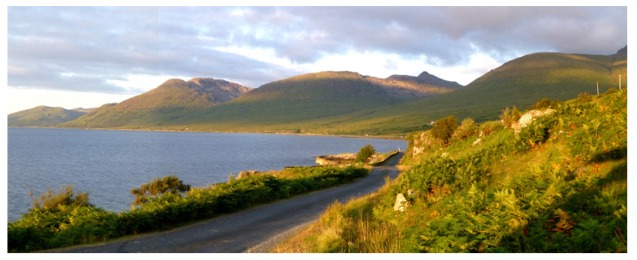
We will have day trips to explore Mull by road, but if you prefer a really wild island, you can choose to stay on Ulva for your entire visit. There's plenty to see and do!
Most visitors to these islands come to see the wildlife:
Photo gallery: The marine environment.Photo gallery: The sea shore.
Photo gallery: Terrestrial environment.
Some people visit Ulva just for its geology. The island is made of volcanic basalt, deposited in layers like a wedding cake, and the coast has plenty of basalt columns. Jules Verne, Felix Mendelssohn and many famous visitors have taken a boat trip from Ulva to the nearby small island of Staffa, to see its particularly fine basalt columns, and Fingal's Cave. Click here for a free publication by the British Geological Survey, "Mull & Iona: A Landscape Fashioned by Geology".
You can walk and do sea kayaking around Ulva all year round. There are lots of small islands, some only the size of a tennis court! Together, Ulva and the smaller islands are known as the Staffa Archipelago. They're perfect for exploring from a sea kayak. I have 7 kayaks, including some suitable for beginners.
There is plenty of history to see here too, from the remains of a Viking fortified house to the walls of villages abandoned during the Clearances of the 19th century. Some visitors to the area come because the small island of Iona, in the south of Mull, is one of the oldest Christian centres in western Europe, dating from the arrival of Saint Columba or Colmcille in 563 AD. Iona Abbey includes some of the Christian monastery that was built on the same site in 1204 AD.
My teaching:
I have mainly worked with adults at Intermediate level and above, especially executives from Hitachi, Renault, Deloitte Touche Tohmatsu, HSBC Bank, Banca Barclays Italia, Wincor Nixdorf, EDF, SIFA Aérien, SGN-Areva, In Extenso, EHL Lausanne, Deutscher Wetterdienst, Dow Wolff Cellulosics, Kerneos, Safran Turbomeca, General Electric and many other major companies.
I have also worked with independent learners preparing for IELTS, for the English literature element of the French prépa and baccalauréat, for the French agrégation teaching qualification, and for the American USMLE medical examination. And I have done two full-time summer schools with classes of up to sixteen young learners aged 14-18.
See me teaching:
6-second snapshot: https://www.youtube.com/watch?v=uXwz4_is6nw
1-minute snapshot: https://www.youtube.com/watch?v=8LwzN1jLso8
4-minute mini-lesson: https://youtu.be/rynuKETmp2Q
I like to write my own teaching materials, and you will find some examples on my Linguetic website, but I also have sets of textbooks with audio for:
• General English (Face2Face and New Cutting Edge)
• Business English (In Company and Market Leader)
• IELTS (Step up to IELTS and Cambridge IELTS with Answers).
Click for more about my teaching.

My home:
If you're a homestay student, you will stay at my home - with me and the cat, who is called Appin.
Our house was built in the 19th century, but everything except the walls was completely rebuilt in 2021. New roof, new floors, new windows, new everything. It is modern and comfortable inside.
The bedroom for students is 5 metres by 4 metres, with a fine view of the island, the sea and the Gribun cliffs. It has two single beds, a desk, a sofa and two armchairs. Downstairs there is a living room/kitchen, a shower room/WC and a utility room. There is electric heating, a washing machine and large-screen TV with DVD player. If you come by car, you can't bring it onto the island of Ulva but there is free parking on the Isle of Mull, which is a 5-minute crossing by ferry.
Photo gallery: My home.
Visas & Immigration
I am an independent English teacher; I can't give you advice about visas and immigration, so please check the facts on the UK Visas & Immigration website at www.gov.uk/check-uk-visa:
The United Kingdom (the UK) is England, Wales, Scotland and Northern Ireland.
The Brexit transition period ended on 31.12.2020. The UK is now not a part of the European Union.
UK citizen: If you are a UK citizen, you have a free choice of English teacher.
European Union, EEA or Switzerland: If you are from the EU, Iceland, Norway, Liechtenstein or Switzerland, you can enter the UK for up to 6 months without a visa IF the purpose of your visit is for tourism or to visit family, or to do a short course on history or culture; or on the Welsh, Gaelic or Anglo-Saxon languages; or to learn rock-climbing, golf or yoga. However you CANNOT enter the UK if the purpose of your visit is to do a short English course UNLESS you intend to study at an "accredited institution" such as a university. I am not an "accredited institution". In other words, if you are in the UK for work, or as a university student, or for tourism, or to visit family, you CAN study English with me during your visit. You have a free choice of teacher, and you can do homestay English. However, if the Immigration Officer at the airport says "What is the purpose of your visit to the UK?" and you reply "I am here to study English", that must be at an "accredited institution".
Hong Kong citizen: If you have a Hong Kong passport, you are in the same position as a European Union citizen - see above. If you have Hong Kong travel papers (not an HK passport), see "Other countries", below.
Other countries: You probably need a visa to enter the UK. As an independent English teacher, I cannot sponsor you to obtain a study visa. If you enter the UK on a standard visa, you cannot study except for short recreational courses (dance, sport, etc).
Covid-19
Mpst people in the UK are now quite relaxed about Covid, but it is still a good idea to be careful. In 2021 I had two vaccinations (Astra Zeneca) and a booster (Biontech), and in 2022 I had the Biontech/Omicron vaccination. I will continue to have vaccinations and boosters in future, and I take all the precautions that the Scottish government recommends. At present (January 2024) there are no particular limitations in Scotland. You may be required to wear a face covering in medical centres, hospitals and some private places. You must not travel to study with me if you, or any of your family or close contacts, have symptoms of Covid-19.
If you are unable to come because of Covid, I will give you a 100% refund of the money you have paid.
Travel to the Isle of Mull
You travel independently to the Isle of Mull.
I meet you at the ferry port (Craignure) and take you to the island of Ulva.
Mull is an island 200km (4.5 hours) from Glasgow Airport. The journey is magnificent; it goes past lochs and mountains, forests and castles, and there's a 20-km ferry trip to the island. You may see dolphins, seals, deer or eagles on the way.
1) Travel from your home to Glasgow, by air or by trainBy air to Glasgow: Or by train to Glasgow: |
2) Travel from Glasgow to Oban (the ferry port for the Isle of Mull)By public transport: Take a bus from Glasgow Airport to Glasgow city centre. You can take the 500 Glasgow Airport Express (21 minutes, £8.50 or £9.00. OR go in a hire car: You may want to rent a vehicle at Glasgow Airport, so that you have a hire car for the whole of your stay in Scotland. At the airport, there are Hertz, Avis, Alamo, Enterprise, Budget or Thrifty. Near the airport are Sixt and Europcar. You don't need to drive your hire car through the city of Glasgow. From Glasgow Airport, take the M8 and M898 / A898 to the Erskine Bridge, and continue along the A82 west in the direction of Dumbarton. Then follow signs for Loch Lomond and the Trossachs National Park. It takes 2 hours to drive to Oban, where you can take the ferry to Craignure on the Isle of Mull. |
3) Ferry from Oban to Craignure (Isle of Mull)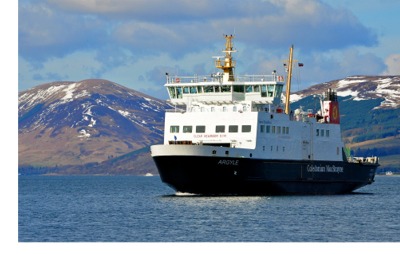
Oban is a nice small town with good shops. The ferry terminal is in the town centre, very close to the railway station and coach stop. A Wetherspoons pub ('The Corryvreckan') next to the ferry terminal is a good place to eat. If you want to spend a night in Oban, Hostelling Scotland has a hostel by the sea, about 20 minutes' walk from the terminal. A private room is about £33 per night, or less if you telephone the hostel to book your room. The hostel phone number is +44 (0)1631 562 025. There are ten CalMac ferry 'sailings' per day from Oban to Craignure in summer, and five per day in winter. A return ticket is about £8 for a foot passenger or £35 for a car and driver. You should buy your ticket in advance. You need a paper ticket; you can print it yourself, or ask CalMac to print it so you can collect it from the office before the ferry 'sails'. You can buy a ticket on the CalMac website, where you will find the Oban-Craignure ferry in the "Inner Hebrides" group of services. The winter timetable is here: https://www.calmac.co.uk/article/2932/Mull-Oban---Craignure In winter, the last Oban > Craignure ferries leave Oban at: |
Here's the Homestay Enquiry Form:

